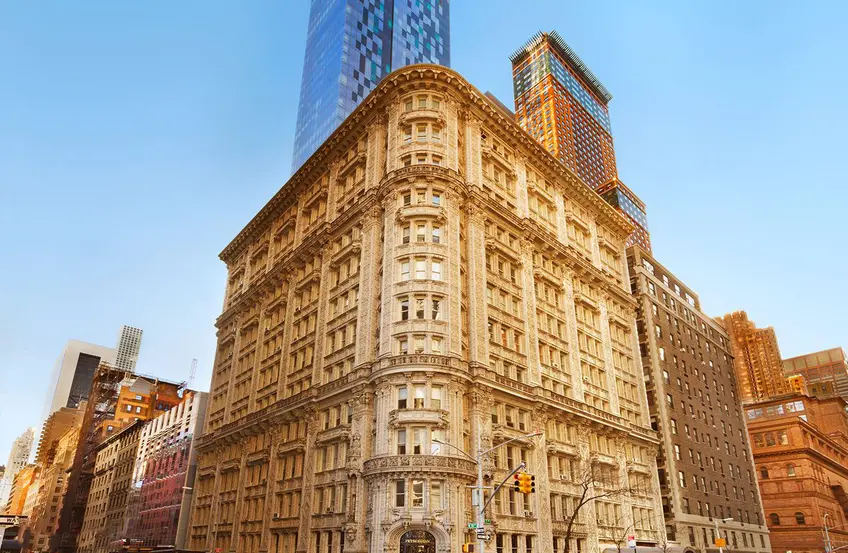 (CORE Real Estate)
(CORE Real Estate)
It is still too soon to say when New York's shops, theaters, and nightlife can reopen, yet it is still possible to enjoy the city’s classic streetscapes and eye-catching architecture on foot (as long as masks are on and proper social distancing is observed, of course). But on all our perambulations, nothing has yet come close to matching The Alwyn Court, located at 180 West 58th Street.
The Harde & Short-designed facade is completely covered in French Renaissance-style, elaborate glazed terra cotta. It is little wonder architecture critic Carter Horsley calls it “the city’s most ornate building.”
In this article:
At the beginning of the 20th century, artist Walter Russell and developer Alwyn Ball Jr. bought the site with a “studio palace” in mind. As a way of easing the transition from mansions to apartments, the 12-story building only had two apartments per floor with 14 rooms and five bathrooms, and a 32-room duplex was also among the units. Early tenants included Jacob Wertheim, president of United Cigar Stores, and Frederick Steinway, whose family’s piano company had just moved around the block to West 57th Street. But within months of opening in 1910, the building suffered a major fire.
 (Compass)
(Compass)
“One of the finest buildings of its type in New York City” - Landmarks Preservation Commission
The Alwyn Court survived the fire but nearly didn’t survive changing trends and the fallout of the Great Depression. During this time the building was foreclosed, gut-renovated, and subdivided into 74 apartments. In the late 1930s, and Dorothy Draper’s celebrated interior design firm oversaw a redecorated lobby and elaborate plaster medallions on the ceilings of public corridors, many of which can still be seen today.
Upon the rise of Modernism and the disenchantment with pre-war architecture, the building’s cornice and balustrade were removed. Fortunately, its 1966 designation as an official New York City landmark has since protected it from further “dastardly remodeling,” as Mr. Horsley put it.
The mid-rise building was converted to a cooperative in 1980, where reputed architecture firm Beyer Blinder Belle led a intricate restoration of the facades. The rehab was instrumental towards the building inclusion on the National Register of Historic Places.
The mid-rise building was converted to a cooperative in 1980, where reputed architecture firm Beyer Blinder Belle led a intricate restoration of the facades. The rehab was instrumental towards the building inclusion on the National Register of Historic Places.
According to CityRealty records, recent co-op closings at Alwyn Court average $1,562 per square foot - well above the Midtown West average but dramatically more affordable than some of the new condo towers that have sprung up around it such as One57 a few doors down, Central Park Tower, 220 Central Park South and 111 West 57th Street.
Currently, there are four units in the building on the market. They include one-bedroom listed for $1.4 million and a two-bedroom listed for $2.2 million. Both remain rich in prewar details like high ceilings, ornate moldings, gracious entrance galleries, and oversized windows.
Currently, there are four units in the building on the market. They include one-bedroom listed for $1.4 million and a two-bedroom listed for $2.2 million. Both remain rich in prewar details like high ceilings, ornate moldings, gracious entrance galleries, and oversized windows.
The building is staffed by a 24-hour doorman and live-in superintendent. Storage units transfer with the apartments, and additional amenities include a bike room, laundry room, and central courtyard. The Petrossian Boutique & Cafe is housed at the base of the building, and residents enjoy easy access to Central Park, Carnegie Hall, Columbus Circle, Fifth Avenue shopping, the Theater District, and nearly every major subway line in the city.
In its heyday, The Alwyn Court's neighbors included The Osborne (another New York City Landmark), Navarro Flats, and The Rembrandt, the city’s first-ever cooperative. Over 100 years later, a new gentry has taken shape at Billionaires Row. But while the likes of One57, 111 West 57th Street, and Central Park Tower may literally cast The Alwyn Court in shadow, they have not outshone it in terms of history and craftsmanship.
↓ "Harde & Short lavished the exterior with a French Renaissance explosion of decoration. Inspired by the court of Francis I and using the king’s royal symbol, the fire-breathing crowned salamander, the architects covered every inch of façade with elaborate terra cotta embellishment." -Daytonian in Manhattan
↓ At the corner, the original residential entrance is the caviar icon Petrossian Boutique & Cafe. Zagat's explains, when you’re "craving a caviar fix", this Carnegie Hall–area "grand dame" is a "sublime" (albeit "frightfully expensive") pick, also offering "high-quality" French-Continental cuisine in a “lovely” space with “art deco styling.”
↓ These dragon-like gatekeepers at the building's original corner entrance are actually stylized representations of salamanders. According to Daytonian in Manhattan, in the medieval period, salamanders got the reputation of being able to survive and extinguish fire. A handy deterrence given the major threat fire posed to cities even at the turn of the century.
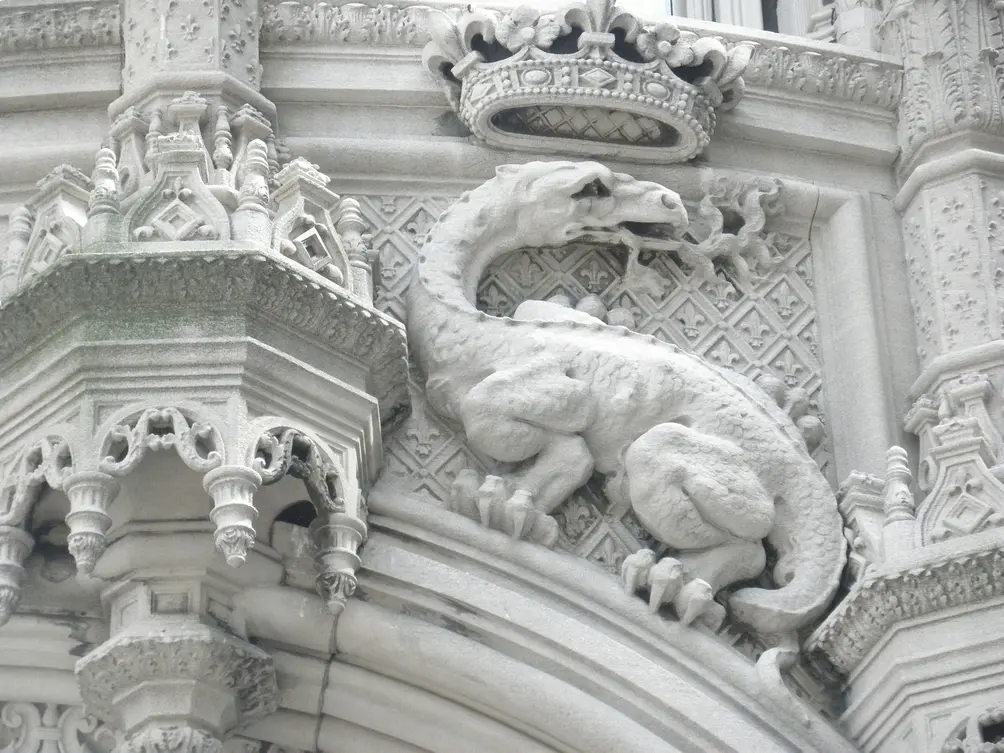 Facade detail via Wiki Commons - Jim.henderson
Facade detail via Wiki Commons - Jim.henderson
↓ The main residential entrance is located on Sixth Avenue, midblock between West 58th and 57th streets
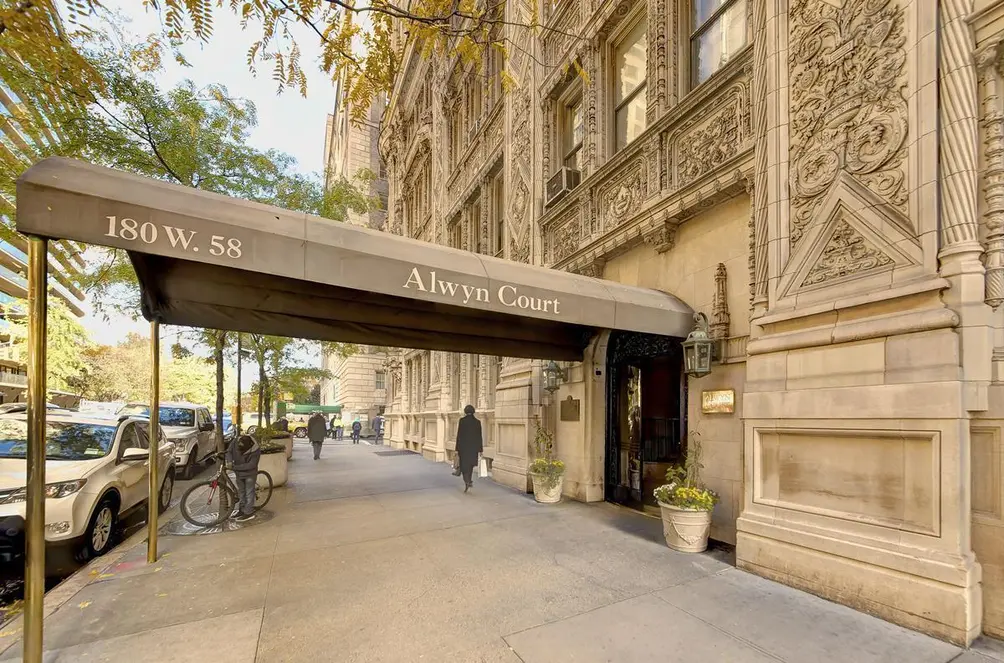
↓ The new residential lobby is not original to the building
t
↓ The courtyard was transformed into an enclosed atrium in the 1980 renovation and co-op conversion led by architects Beyer Blinder Belle.
↓ Richard Haas was also commissioned to paint a trompe l'oeil mural the full height of the building's central courtyard, which was covered with a skylight to become an atrium.
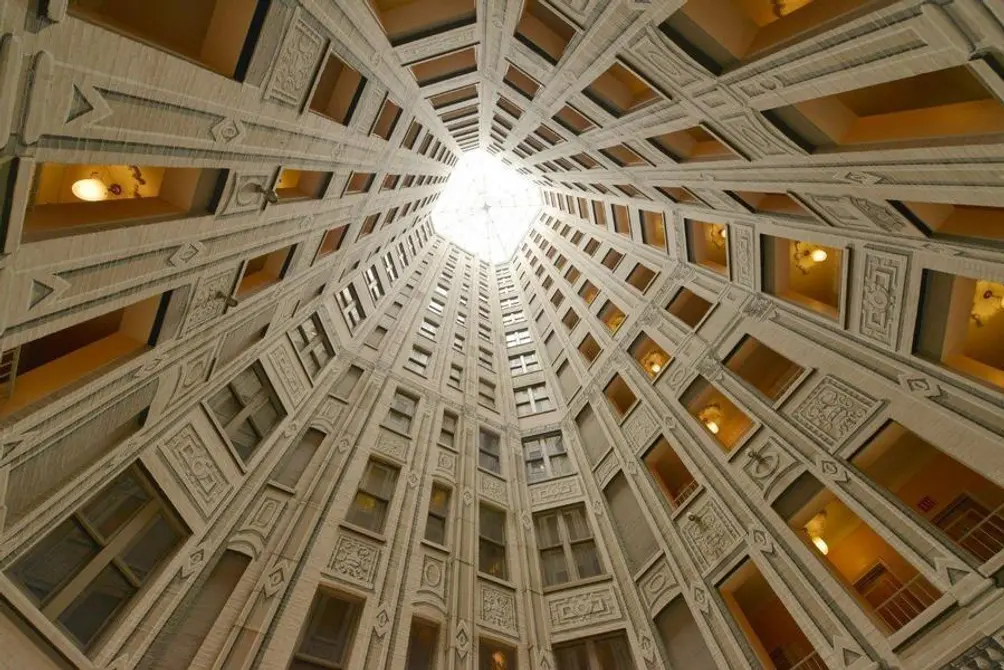 Skylit atrium
Skylit atrium
↓ A trompe l'oeil (French for '"deceive the eye"') is an art technique that uses realistic imagery to create the optical illusion that the depicted objects exist in three dimensions. More of the city's blank walls need these.
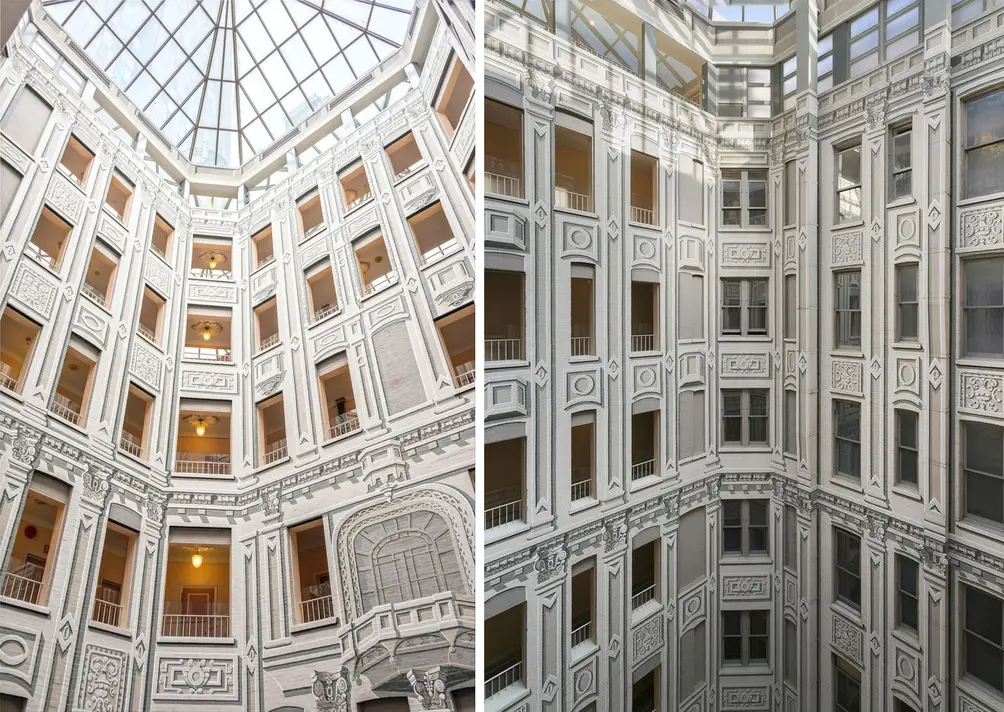 via Corcoran
via Corcoran
↓ A chance to snag one of the apartments is relatively rare. This third floor 1,400 square foot spread is behind the rounded corner and has views of Central Park. The 2-bed/2-bath sold for $2,425,000 in 2015.
↓ Previous listings have shown that some owner's decor tastes complement the building's ostentatious facade.
↓ Vivacious
↓ As seen in the floorplan at the top, a handful of units in the building don't face a street but towards a rather dim courtyard. This unit, #2C, makes the best of it, giving you no reason to ever look out.
↓ The 1-bed/1.5 bath home sold for $1,010,000 in late 2018. Love the Medieval flair.
↓ Making the most of a dim situation
Would you like to tour any of these properties?

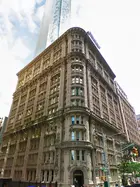
 6sqft delivers the latest on real estate, architecture, and design, straight from New York City.
6sqft delivers the latest on real estate, architecture, and design, straight from New York City.
